Index
Page 4 of 5
We must admit we really like cases such as Obsidian 800D for the vast interior that makes for easy access to any component, water-cooling system capabilities, great airflow with room for plenty of silent fans, etc. Furthermore, such cases allow for carefree installation of large and hot graphics cards, such as SLI or CrossFire systems, whereas some simply might like this case for being high tower and allowing for storing plenty of data across more hard disks.
On the Obsidian 800D, Corsair divided space in two parts/chambers, and we really liked this since the upper chamber leaves clean space for the motherboard whereas the bottom one holds the PSU and the rest of the unused cabling.
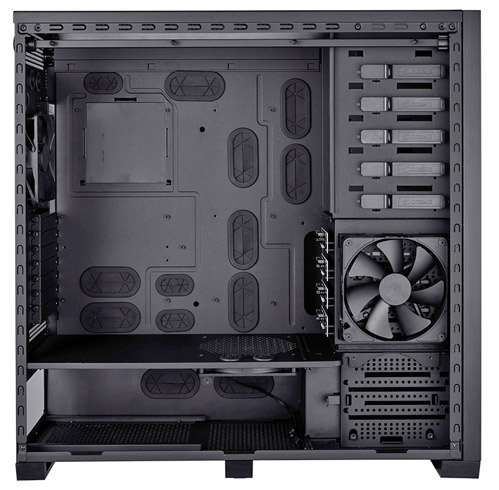
Corsair placed the PSU on the bottom of the case and the two chambers are separated. The motherboard is located relatively high, so all the components are easily reachable, without having to lay the case on its side or having to bend down to the floor. Furthermore, the feet also did their fair share on increasing the height, as they keep Obsidian 800D almost 3cm above the floor.
We usually talk of mounting components after we’ve finished talking about features, but this time we’ll make an exception and show the system we’ve built. We’re doing this just to show you how big Obsidian 800D is. There’s more than enough room in the case even with extended ATX motherboard and the largest card, currently being HD 5970 is pretty comfortable in the case. For our testing we used MSI P45D3 Platinum ATX motherboard and CoolerMaster UCP 1100W PSU that’s almost 19cm long.
Corsair made sure that mounting a motherboard is as easy as it gets and they already put appropriate screws for mounting ATX motherboards. All the other mounting holes are clearly marked and it’s easy to tell which ones are intended for different motherboard form factors.
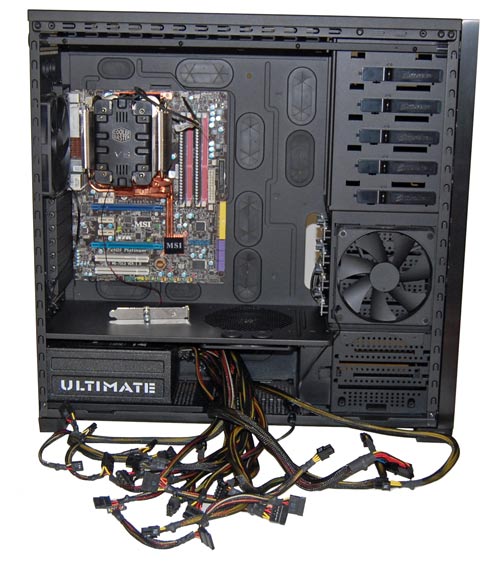
As you can see, the motherboard tray has plenty of openings intended for cable management, and virtually any cable-shortcut you could think of is already covered by Corsair. The rear shows how much care Corsair invested in designing case components. Each opening is protected with rubber, further improving both looks and airflow.
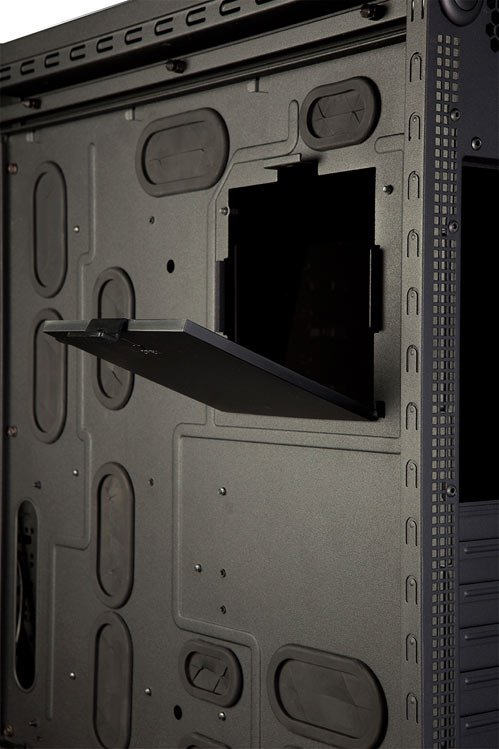
Anyone who’s ever taken their motherboard off to mount CPU coolers know the time-consuming effort associated with it, but Corsair made sure that such scenarios don’t occur with Obsidian. Motherboard tray features a large opening behind the motherboards socket so if your CPU cooling comes with a backplate, you can mount it without having to take the motherboard off. The plastic door that close this are further proof of the care invested in this case.
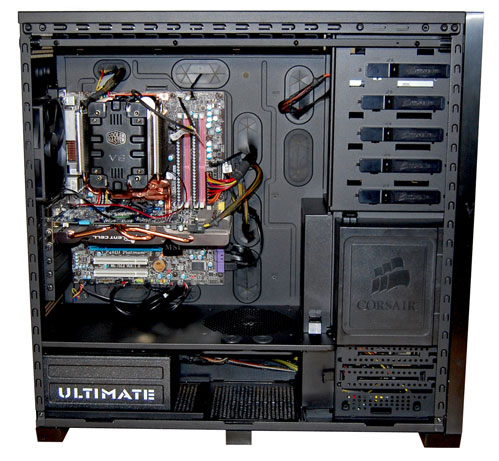
The following photo shows Corsair’s logo, placed on the hood that covers the 140mm HD fan. Corsair went one step further than the competition by offering us the hotSwap mechanism, which is accessible via the front panel. This makes mounting and swapping hard disks/SSDs a breeze, just like in modern servers. The only limiting factor would be 4 HD capacity, but it’s expandable via the included brackets which allow for additional two disks towards the bottom of the front panel.
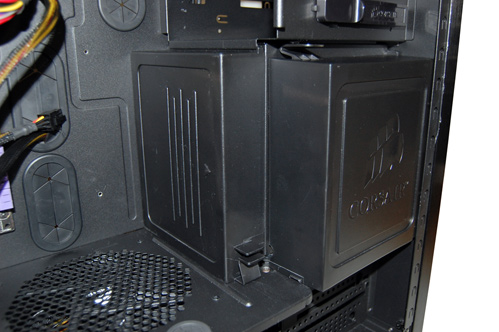
The following picture shows how Corsair did the trick with the hotSwap mechanism.
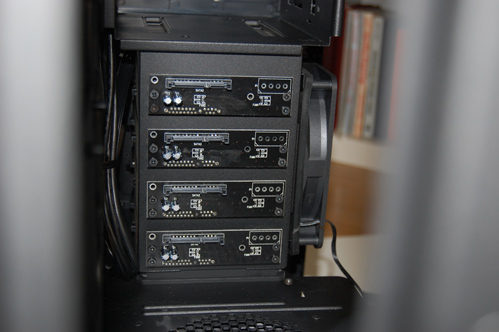
Somewhere towards the beginning of our review, we spoke of the strange extension SATA cord with four connectors. This cable is specially tailored to power all four residents of hotSwap mechanisms. Just to be on the safe side, Corsair also ships four SATA cables.
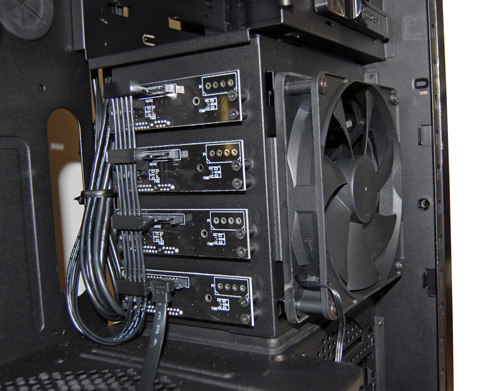
Corsair opted on three quiet 140mm fans and left the option of adding four 120mm fans. The following picture shows the fan that keeps the airflow running between the chambers.
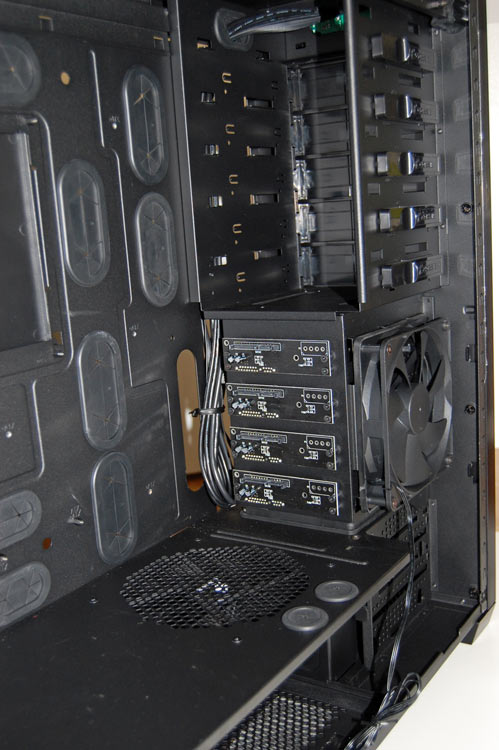
The fan in the middle is the main fan that brings fresh air to the case, and as you can see on the following photo, the air should escape via the openings on the top of the case.
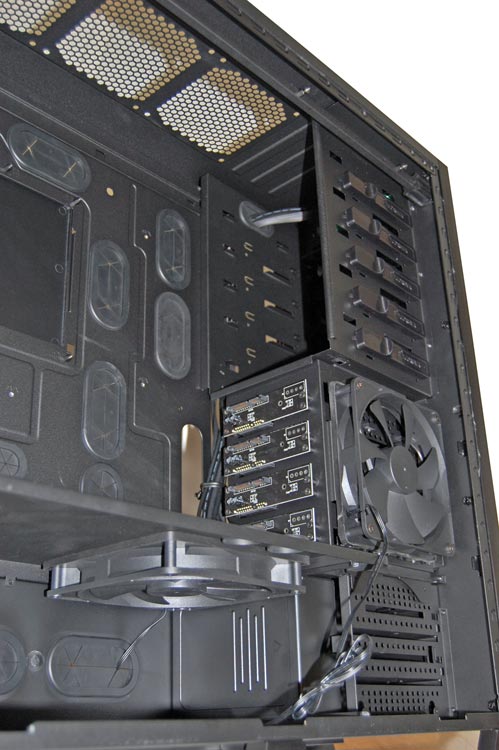
If you choose to add additional two hard disks, you can cool them with a 120mm fan in the same way that the 140mm fan cools the four aforementioned hotSwap components.
Obsidian 800D offers space for 5 optical devices with a simple sliding mechanism to fit them in 5.25’’ bays. In order to mount an optical device you’ll have to remove the 5.25’’ bay cover first, which requires the entire front panel to be taken off.
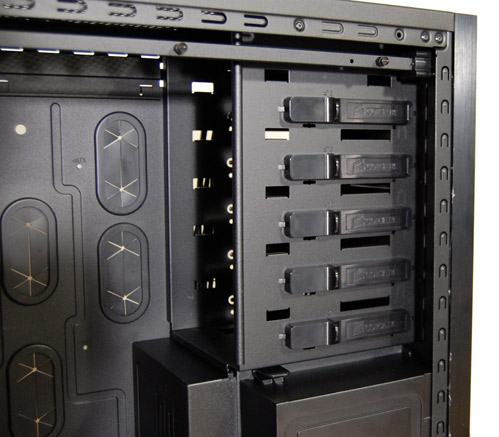
As you can see on the following photo, Corsair aimed to make mounting and upgrading as easy as possible, and they used the screws that require no tools – you can do it all by hand. Unfortunately, this time around we had to resort to using tools as they were seriously fastened, probably for transport purposes. After you unscrew them once, mounting and upgrading is a breeze.
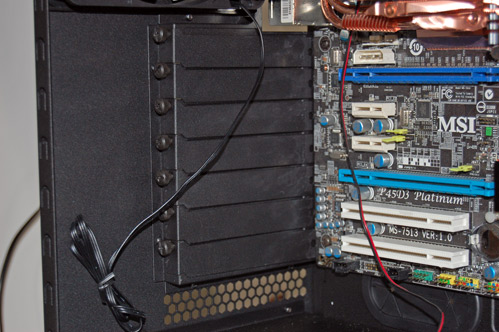
If you’re interested in details on mounting, it would be best to consult the detailed user’s manual that you can find here.
